The end of the year is a busy time for most people. Unfortunately, it is usually also the last opportunity to make financial moves that will count towards the current year. If you’ve been slow to tackle your financial to-do list this year, consider completing your checklist before the end of the year. No matter how eager you are to say goodbye to 2020, it doesn’t mean you should leave money on the table.
Get started on your year-end financial checklist with four money moves you should prioritize now.
1. Put extra savings to work
Often, investors realize they’re holding too much cash, but they’re just not sure what else to do with the money. If you’re a high earner, you may notice your paycheck increased over the year as you exceed the Social Security taxable wage base, $137,700 in 2020. If you’re keeping too much cash in the bank (earning next-to-nothing), here are seven ways to put extra cash to work for you:
Ways to use extra savings
- Invest excess cash using a brokerage account
- Max out contributions to a 401(k), 403(b), or IRA (see 2020 limits). Turned 50 this year or will it be by December 31st? You’re eligible for an additional $6,500 catch-up contribution to a 401(k), 403(b), or $1,000 to an IRA.
- Fully fund your emergency cash account
- Using the money to pay the tax on a Roth IRA conversion
- Refinance your mortgage, especially given historically low-interest rates
- Pay off (or down) student loans or high-cost debt
- Own a business or have a side job? Consider reducing your taxable income while saving for retirement with a SEP IRA or Solo 401(k)
2. Review your benefit elections and 2021 contributions for open enrollment
Most companies allow workers to adjust their health insurance and other benefit elections at the end of the year. Don’t skip it! This is your chance to take advantage of tax-saving opportunities, and employer-paid benefits, or save money by opting out of coverage you’re not using.
- Health insurance coverage. Are the 2021 insurance premiums increasing dramatically on your policy? You may want to run the numbers to see if another provider your company offers could provide cost savings. If you’re on a high-deductible health plan with a health savings account (HSA), does that still work for your situation?
- Life insurance. If you have a voluntary term life insurance policy through work, you may want to consider whether getting a private policy would cost less. The general rule of thumb is that an annual renewable term policy will cost more in a few years’ time. So if you need coverage beyond that, contact your insurance professional to get quotes. While you won’t want to cancel your life insurance before having another policy in force, consider getting a jump for next year.
- Flexible spending accounts. Are you utilizing a health care or dependent care flexible spending account? Pre-tax contributions can save hundreds depending on your tax rate. Also, check your current balance and find out whether your plan allows rollovers for any unused money; some plans are use-it-or-lose-it.
- Pre-tax benefits. Not going back to work for the foreseeable future? Consider canceling any transportation benefits (even if they’re pre-tax), parking, etc.
The IRS recently announced 2021 contribution limits, so keep this in mind when making your selections.
3. Look at your 401(k) – both old and new
Investors sometimes take set it and forget it too literally. As part of your year-end financial checklist, give your 401(k) some needed attention. Although there aren’t any changes to the 401(k) contribution limit in 2021, you should check your current investment choices, allocations, and scheduled contributions.
- Are you missing the match? Maxing out your 401(k) too early in the year could mean leaving employer matching dollars on the table. Depending on your situation and asset mix, you may also want to consider using an after-tax Roth 401(k) option.
- How are you invested? Is your account aligned with the investment mix you picked? You may need to rebalance your 401(k) – more on that below. Or perhaps your account has grown significantly and a target-date fund is no longer your best option. If your plan offers a brokerage window, you might be able to expand your offerings.
- Do something with old retirement plans. After you leave your job, it’s easy to forget about an old 401(k) or 403(b). Retirement plans often limit your investment options and make it harder to know where you stand financially. Consider rolling an old 401(k) over to an IRA or weigh the pros and cons of a Roth IRA conversion.
- Review beneficiary designations. Make sure your elections are current and consider naming contingent beneficiaries.
4. Diversify or reallocate your investments in a tax-efficient way
The end of the year presents an opportunity for tax-loss harvesting in taxable accounts. In all accounts, rebalancing and diversifying a concentrated position are opportunities. It’s usually best to consider these moves together, which is why it’s an important part of a year-end financial checklist.
Tax-loss harvesting
Tax-loss harvesting is the process of selling an investment that has lost value in your portfolio to realize losses for tax purposes. Losses can offset taxable capital gains and potentially even reduce ordinary income by up to $3,000 in the current year. The remaining losses can be carried forward as a deduction in future years. Before putting this tax strategy into action, consider whether the savings are worth the risks of potentially being unaligned with your target asset allocation.
If you own actively managed mutual funds in a taxable account, be aware of dividend and capital gains distributions at year-end. If the fund hasn’t issued distributions yet, consider selling before the ex-date. When you own the fund on the ex-date, capital gains will be reportable to you for tax purposes even if you sell the day after the ex-date.
Rebalancing your accounts
Portfolio rebalancing is the process of buying and selling part of your investments to get back to your original investment mix. Without rebalancing, you may be taking on more risk than necessary. Over time, the value of your investments changes as different asset classes outperforms on a relative basis. This impacts the composition of your portfolio.
To correct it, consider portfolio rebalancing at a predetermined interval. When you rebalance, you sell overweight positions, reinvesting the proceeds in underweight funds to restore the intended asset allocation.
Selling a concentrated stock position, likely in employer stock
For investors looking to diversify out of a concentrated stock position, most typically employer stock, the end of the year presents an opportunity to spread taxable gains over two tax years in a matter of days or weeks. Particularly when the stock is also your employer, wild swings in the stock price can decimate on-paper wealth.
If you own a stock that has outperformed, you may be hesitant to sell due to FOMO (fear of missing out). But if taking profits allows you to achieve or further your goals, why not take the opportunity? After all, that’s what really matters.
Getting help tackling your year-end financial checklist
Finding time to accomplish financial tasks or keep up with regular maintenance can be hard for busy professionals. Whether you truly need a financial advisor or accountant will depend on your situation.
But for individuals who would benefit from working with an advisor, delaying the decision may mean missing opportunities or making expensive mistakes. Just as the benefits of making good financial moves can compound over time (through investment returns or growing your savings), the negative effects of making the wrong financial choices can plague you for years.
This article was legally licensed through AdvisorStream

Jeff G. Labelle
President & CEO | Gulf Coast Wealth Advisors
Phone: (941) 362-0700
Fax: (941) 362-0447
Toll Free: (877)433-5902
